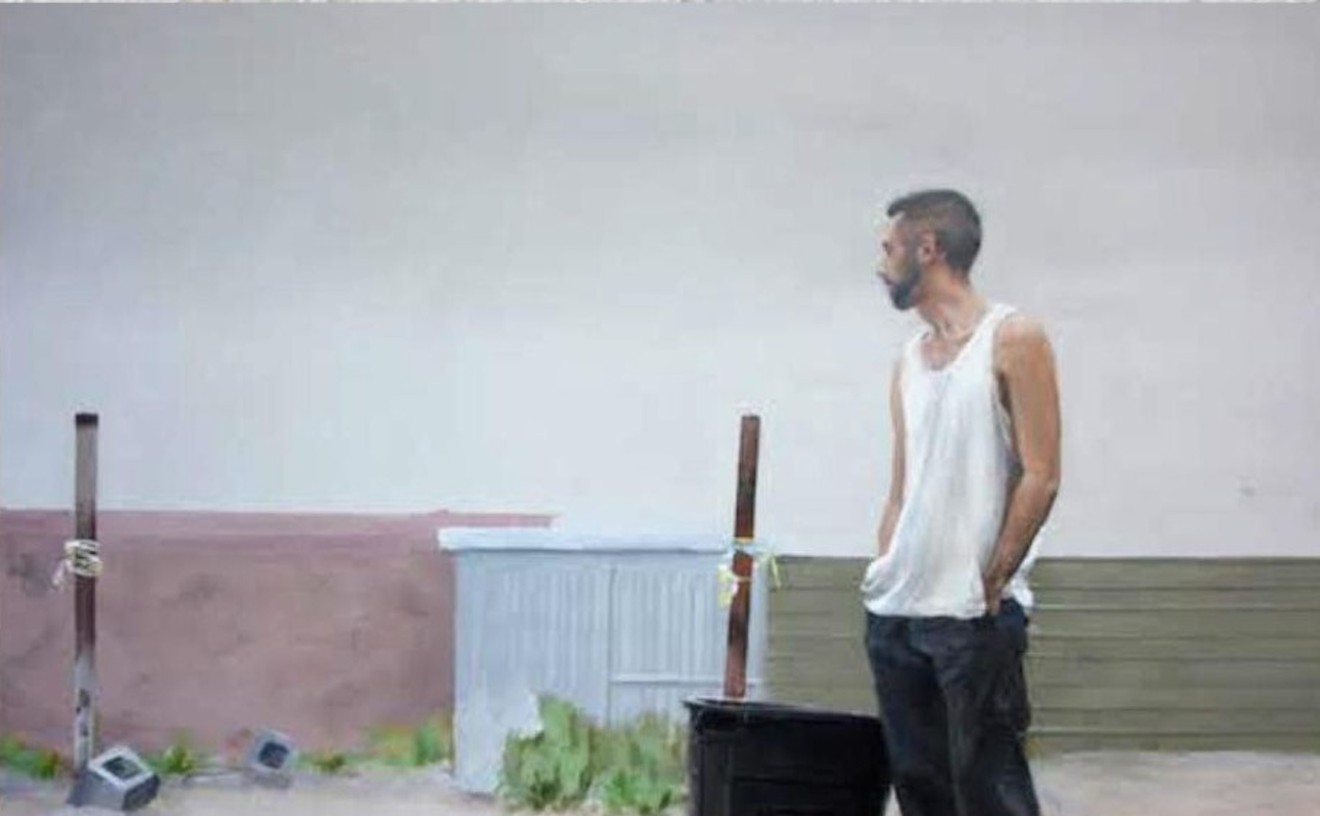The show, which addresses Mexican-American identity, border issues, race, misogyny, capitalism and the injustices of the global economy, is notable because it's a highly politicized exhibition in a museum that generally steers clear of politics.
Ruiz, 34, is a second-generation Mexican-American who grew up in Texas and Arizona, where the cultures of El Norte and Mexico blur together. Reflecting his own bicultural upbringing, Ruiz blends art styles from several eras and cultures into his work. His creations look old and new at the same time. There's a dollop of early 20th-century German expressionism in the heavy black marks of his prints; his woodcarvings exude the raw simplicity of Mexican folk art; and you can't help but think of piñatas when you look at the papier-mâché figures in a room-size installation called Westernization, which features a King Kong-size American blonde crushing a businessman in her manicured hands.
Ruiz blends these influences into eloquent work that speaks with a contemporary Latino voice.
In Trophy Wives, Ruiz skewers serial grooms and the sexism that lies beneath their wife-dumping. A carved wooden white guy in business attire has a spinning wheel mounted in his shoulder. The man has crude, cartoonish features: a flat nose, flat hands, and cheeks painted a clownish, rosy red. We're in lampoon territory here, far from the earnestness of realism or even surrealism. On the wheel stand tiny, carved wooden figures of women, both blondes and brunettes. Spin the wheel and a new woman stands on the man's shoulder. They're interchangeable, anonymous, disposable.
Unfortunately, you can't spin the wheel. Trophy Wives and the other interactive pieces in the Ruiz exhibition are roped off so you can't interact with them. This means some of the pieces don't function as the artist intended.
Machismo takes on the he-man ethos of traditional Latino culture. A bull with exaggerated testicles glares out of the front side of a table covered in images of manliness. Carved images of he-man sins surround the bull: A man gawks at a woman while his wife is on his arm; a woman nurses a black eye; and a man drives a car with a child who is not in a car seat. On one end of the table is a hand crank that turns a carved head mounted on the other end. The head can be turned to point at one of a pair of images, a university or a prison. At first glance, it seems like a simple commentary about choosing between education and ignorance, but Ruiz has drawn the slammer and the school so that they resemble one another. "¡No más!" reads a banner carved above the two images, but Ruiz must not believe a traditional education is the answer to ending cultural-based misogyny. Maybe if we could turn the crank on Machismo, we could find out just what Ruiz's solution is. Or maybe there is no solution, and that's the point. Nothing is more boring than artwork that answers its own questions too neatly.
M.I.A. (Mexicans in America) addresses Latino identity in America. A large, carved wooden hand balances papier-mâché figures on its fingertips that represent the options for a brown person once he comes to the United States. In Ruiz's depiction, the choices are extreme. There's death (a skeleton in a coffin); incarceration (a figure in a cage); manual labor (a figure dragging a bale of something); a janitor (a figure pushing a broom); and assimilation (a briefcase-toting man in a suit and tie). The figures are made in the quaint, cloying style of Day of the Dead figures, but there's nothing cute about their message: To make it north of the border, one must surrender one's Mexican identity.
In Escape Diversity, a crudely drawn wall surrounds a gaggle of woodblock-printed hands on a canvas. The hands are identical, and on the fingertips of each hand are icons of guns, TVs, soda cans, cell phones, bibles. Tiny mermaids hold banners that read "Fear things," "Buy more" and "Patriots consume." It's Ruiz's take on the American heartland in 2005, a place where fearful, faceless consumers huddle behind the walls of gated communities and put their faith in God, country and consumer goods.
Like much of Ruiz's work, it's not subtle. But whispered messages go unnoticed in an age when no one is paying attention. That's why Ruiz's work yells as loudly as it can.










